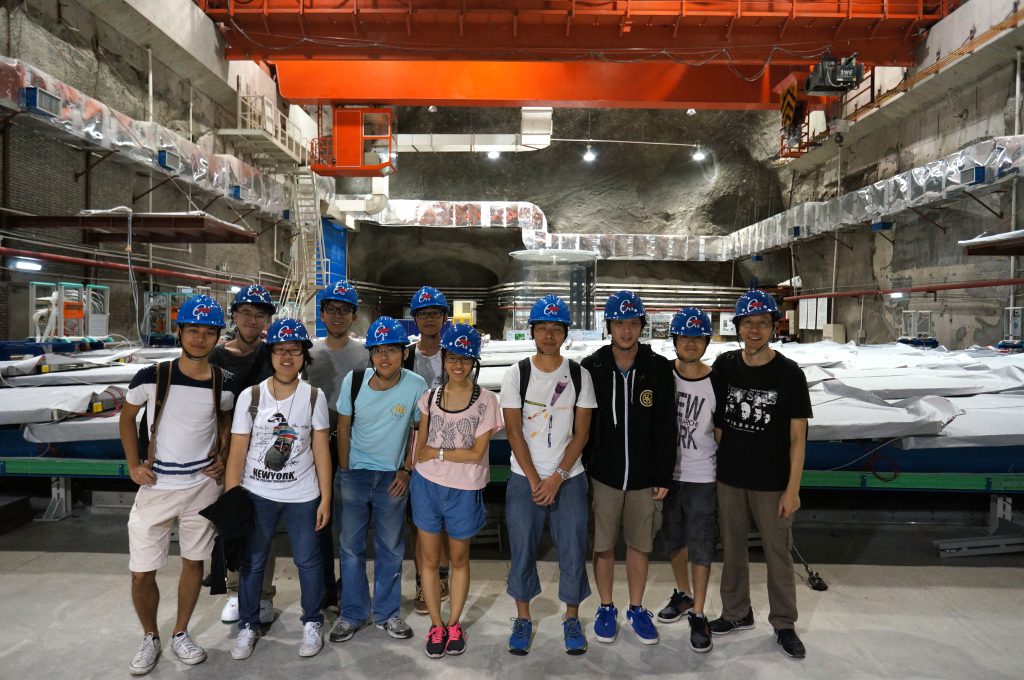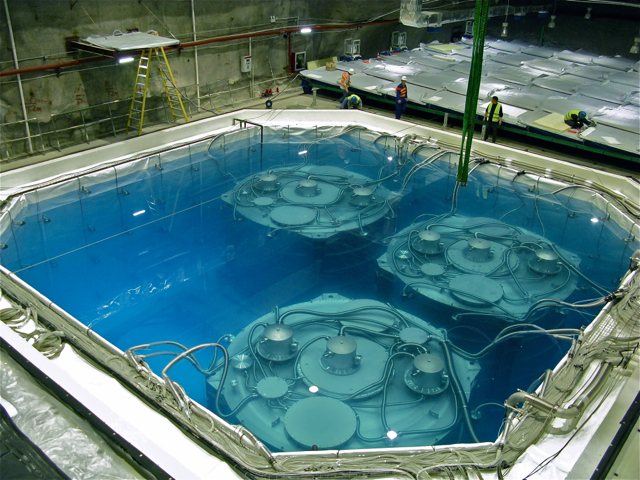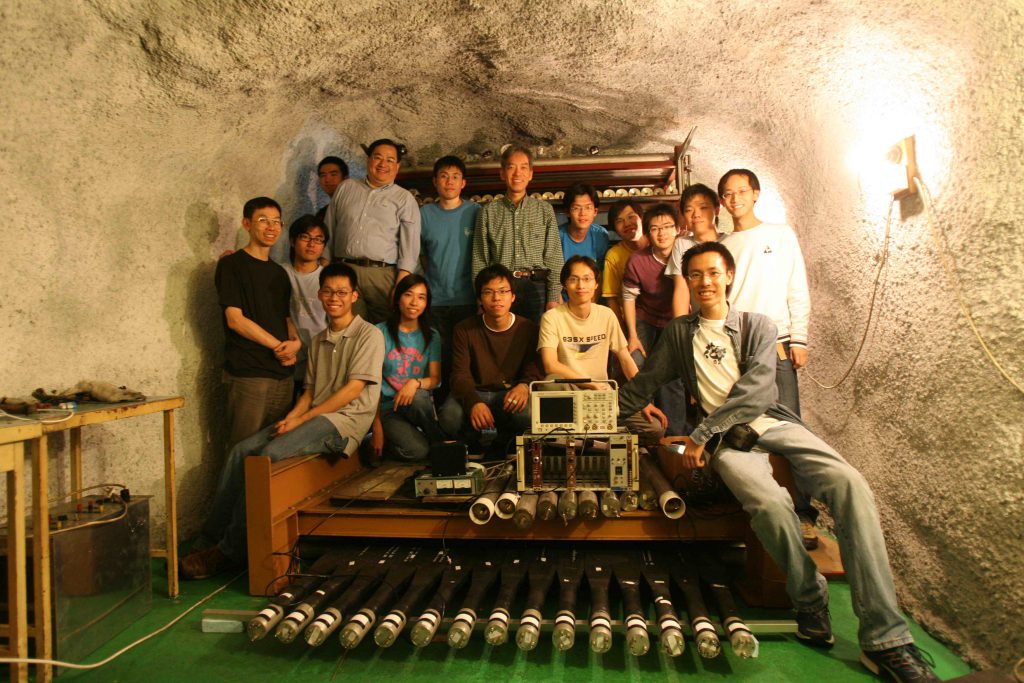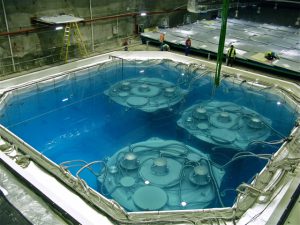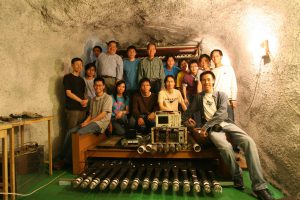CUHK
News Centre
CUHK leads Hong Kong physicists to contribute to the Daya Bay reactor neutrino experiment producing the most precise neutrino measurement ever
After a decade of research, the Daya Bay Reactor Neutrino Experiment has reported the world’s first conclusive and highly precise measurement of one of the key parameters to understanding neutrino oscillation. The findings provide important insight for physicists trying to answer an unsolved yet fundamental problems in the Big Bang model — the imbalance of matter and antimatter in the universe.
A group of elite Hong Kong researchers led by Professor CHU Ming Chung from The Chinese University of Hong Kong (CUHK)’s Department of Physics, together with talented CUHK undergraduate and graduate students, have been taking part in this international experiment since it began. They designed and built subsystems for monitoring the detectors and their environment, as well as data acquisition for the experiment, showcasing the city’s impressive research capacity. The Daya Bay experiment helps physicists to explore some of the biggest mysteries of the matter content of the universe.
Measuring the missing parameters to understand “ghost particles”
Neutrinos are subatomic particles that are both famously elusive and tremendously abundant. They endlessly bombard every centimetre of Earth’s surface at nearly the speed of light, but rarely interact with matter at all. They can travel through a lightyear’s worth of lead without disturbing a single atom. Because of their hard-to-detect property, neutrinos have been called “ghost particles”.
One of the defining characteristics of these particles is their ability to oscillate between three distinct types, or “flavours”: muon neutrino, tau neutrino, and electron neutrino. These neutrino oscillation probabilities are described by three mixing angles, in which theta13* was the only mixing angle that remained to be measured. The search for theta13 is the main goal of the Daya Bay experiment and would bring us a step closer to solving the mystery of neutrinos and the imbalance of matter and antimatter in the universe.
The research team built large, cylindrical particle detectors around the Daya Bay Nuclear Power Plant that pick up light signals generated by antineutrinos streaming from those nuclear reactors. The first theta13 measurement was announced in 2012, just one year after the beginning of the experiment, and was selected as one of Science magazine’s Top 10 Scientific Breakthroughs of 2012.
When the experiment ended in 2020, the team has captured an unprecedented 5.5 million interactions from neutrinos and obtained the most precise measurement yet of theta13, with a level of precision two and a half times greater than the experiment’s original goal.
Neutrino background measurement and data acquisition by Hong Kong research team
The experiment was built through an international effort co-led by the Institute of High Energy Physics (IHEP) at the Chinese Academy of Sciences and the U.S. Department of Energy’s (DOE) Lawrence Berkeley National Laboratory and Brookhaven National Laboratory. The collaboration involves 237 researchers from 42 institutions in Asia, Europe and North America. The Hong Kong team featured Professor CHU Ming-chung of CUHK’s Department of Physics as the principal investigator, and Professor John LEUNG and Professor Jason PUN of the University of Hong Kong’s Department of Physics as co-investigators. They received more than HK$17 million in funding from the Hong Kong Research Grants Council and were supported by more than 40 CUHK Physics students, some of them undergraduates.
The Hong Kong team contributed to the experiment by designing, building and operating the subsystems that monitor the levels of mineral oil and supply nitrogen gas in each of the antineutrino detectors, ensuring their continuous normal operation. The team also contributed significantly to data acquisition and analysis of data for sterile neutrino and neutrino decoherence searches.
They also ran experiments in a small underground laboratory in Aberdeen Tunnel to support the research and development of the Daya Bay Experiment, including building detectors to observe the background levels of cosmic ray and neutron emission at an underground laboratory that has similar environment to that of Daya Bay.
“It’s the first time that a research team from Hong Kong has joined a major international experiment in fundamental physics and made breakthrough discoveries.” said Professor Chu. “It was a huge boost to fundamental physics research in Hong Kong.”
Moving forward, the international Daya Bay collaboration expects to report additional findings from the final dataset, including updates to previous measurements.
*Physicists measure theta13 in terms of its oscillation amplitude, mathematically written as sin22q13.
The joint press release issued by the Daya Bay Neutrino Experiment:
http://english.ihep.cas.cn/nw/han/y22/202205/t20220531_306058.html
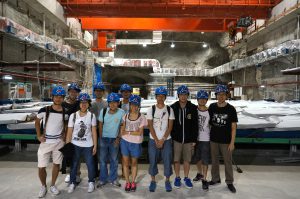
Professor Chu Ming-chung (1st from the right) and students of CUHK Physics Department at the Far Experimental Hall of the Daya Bay Reactor Neutrino Experiment.


